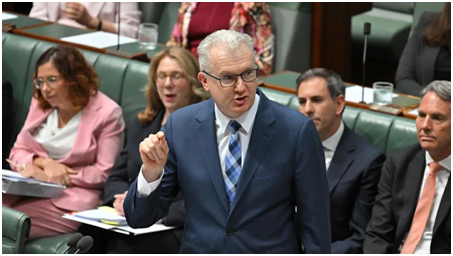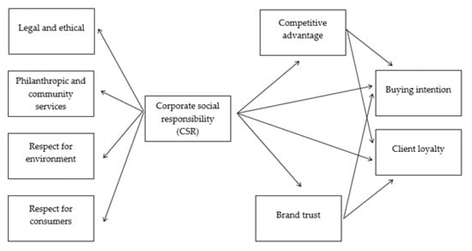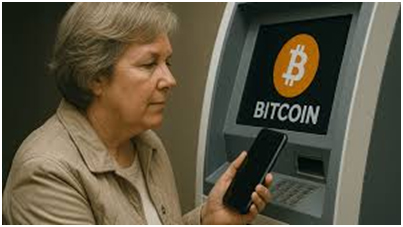Australia’s financial spy moved swiftly to stop criminals using cryptocurrency ATMs with the addition of hard caps, tighter customer checks and new operating terms for ATM providers. AUSTRAC is now requiring crypto ATM operators to include AU$5,000 limits on cash withdrawals and deposits per transaction, post compulsory scam warnings and adhere to better customer due diligence requirements. (AUSTRAC)
Regulators say the move is a result of mounting scams, drug financing and mule-account cons on cash-filled ATM transactions. Federal authorities and police cite millions worth of stolen funds from crypto ATM scams and mounting evidence that the machines appeal to criminal syndicates. (AUSTRAC)

Australia Targets Crypto ATMs in Fresh Money Laundering Crackdown (Image Source: Yahoo News Australia)
Why Now: The Convenient Explanation
Cryptocurrency ATMs grew exponentially and well ahead of regulation. Nearly all take cash deposits instantly converted into cryptocurrency to rapidly and anonymously launder criminal proceeds. AUSTRAC’s audit uncovered patterns of suspected fraud, repeated suspicious activity, and a troubling victim profile of bullied elderly Australians threatened with violence to send life savings. (ABC)
What Regulators Are Forcing Operators To Do
- AUSTRAC’s conditions are:
A AU$5,000 daily cap on cash withdrawals or deposits via crypto ATMs. (AUSTRAC) - On-screen mandatory scam alerts and customer notifications. (AUSTRAC)
- Stricter reporting of transactions and stronger customer identification (KYC) procedures. (AUSTRAC)
- Ongoing monitoring and risk assessment; non-compliant businesses may be denied registration or have their registration cancelled. (AUSTRAC)
- Those are concrete, short-term levers: cut the cash limit, turn the machine into more of an over-the-counter point of sale and allow regulators to revoke bad players’ registrations.
What the Evidence Shows
Reported scam losses traceable to crypto ATMs were more than AU$3.1 million over a 12-month timeframe, according to police engagement and reporting models. (ABC)
Australia has a rapidly growing number of crypto ATMs estimates putting the country from dozens in 2019 to over a thousand machines in recent years, one of the world’s more ATM-dense markets. Regulators raised an eyebrow at the way 99% of some machines’ transactions are in cash. (Finance Magnates)
The Human Story: How Scams and Criminal Networks Use the Machines
Brief, bitter story: callers defraud, tell victims to buy cryptocurrency at a local kiosk, and then threaten or psychologically blackmail evidence of the transaction occasionally. Cashpoint ATMs make it as convenient for thieves. Police investigations have revealed victims withdrawing tens of thousands of dollars in cash to machines, or returning repeatedly to complete pre-arranged “investments.” (Cointelegraph)

Scammers Use Crypto ATMs to Drain Victims Through Fear and Fake Investments (Image Source: AARP)
They have also discovered “mule accounts” and coerced middlemen: exchange or bank accounts taken by unsuspecting consumers, occasionally foreign students, or vulnerable citizens to send or receive money. Organized crime gangs seize them to pile up and wash the dirty money, then sell them for crypto in the kiosks to launder cash outside, the authorities state. The authorities are trying to break that chain, extending their supervision from the kiosks to the accounts that provide them. (The Guardian)
Practical Impacts: Victims, Traders and Operators
They are generally older Australians, found by police to be over-represented among the machines’ heavy users. They are retirees intimidated into transferring life savings. That prompted rapid public warning and demands that the machines include a clear scam warning. (ABC)
Retailers and shopping centre managers with ATMs on site are risking their reputations and in breach of compliance. Operators must balance now whether to fit improved software and KYC measures, accept lower volumes, or withdraw machines from certain sites. AUSTRAC has already refused to re-register at least one provider on discovering unacceptable risk. (AUSTRAC)
Industry Response: Uncomfortable, Pragmatic, and Fractured
Some operators freely acknowledge the need for more controls and assert that reasonable controls protect customers and business sustainability. Others argue that high levels of compliance and limits will put small operators out of business and will push some businesses under the radar to unregulated peer-to-peer markets and that would be counter-productive.

Crypto ATM Sector Divided Over Stricter Controls (Image Source: MDPI)
Crypto business groups vent that honest businesses must bear the brunt of regulation aimed at clearly fraudulent uses. Exchanges and banks are also paying a price: regulators have indicated they will apply the same expectations to all businesses accepting cash for crypto, not just kiosks. (Cointelegraph)
How This Aligns With International Trends
Australia’s action follows foreign regulatory developments tightening anti-money-laundering (AML) controls over on-ramps and cash conduits. Foreign regulators increasingly consider crypto ATMs to be high-risk on-ramps and promote greater KYC and transaction monitoring. Australia’s forceful caps and warning requirements are unique in terms of pace and focus on cash flow, a long-documented AML defense weak point. (Finance Magnates)
Short-Term Effects on Users (Brief, Understandable)
If you use a crypto ATM:
- Expect cash limits arranged for transactions under AU$5,000, or use a licensed exchange with KYC checking. (AUSTRAC)
- Pay attention to on-screen warnings. If you have someone threatening you to send money or promising guaranteed returns, hang up and report. (ABC)
- Use good, well-regulated websites for big-ticket purchases they leave an audit trail that can track hacked funds. (Cointelegraph)
If You Run Or Provide An ATM:
- Verify registration and KYC processes today. AUSTRAC has shown to be serious about cancelling registrations where the risk is not acceptable. (AUSTRAC)
Policy And Enforcement: What Canberra Wants
Government acts on a national-security and public-safety basis. Politicians and police plan to take stronger action than AUSTRAC’s specific directives by prosecuting the supply of mule accounts and increasing information-sharing with banks, visa organizations and online platforms to detect suspicious flows. Ministers vow to consider extending mechanisms to require high-risk machine removal and prosecute operators who disregard rules. (The Guardian)
Brief Recap Before We Get Started
AUSTRAC’s conditions, most notably the AU$5,000 cash limit and screen alerts, are not window dressing. They change operators’, banks’ and frontline staff’s risk management practices. AUSTRAC has refused registration renewal to one operator and warned others, setting it apart to escalate action where there is compliance failure. (AUSTRAC)
Enforcement Case Studies: How The Crackdown Works In Practice
- The Canceled Registration
AUSTRAC’s initial enforcement bite was when it refused to extend a crypto ATM issuer’s registration after a taskforce review discovered systemic compliance deficits. That refusal is a warning: registration powers exist and move swiftly when risk is clear. Operators who regard registration as a paperwork courtesy now need to take an actual business-stopping threat into account. (AUSTRAC) - The Pig-Butchering And Dating-Scam Victims
Law enforcement follow-up on concerted action at ATMs revealed patterns of repetition: victims pressured into purchasing crypto from street-level kiosks for naught but a loss. AUSTRAC and the AFP conducted dozens of interviews with victims in a sweep that revealed repeated small deposits and one large single transfer, collectively the combination most difficult to detect. The campaign had proved most of the most active users to be victims rather than perpetrators, making it impossible to profile but consolidating the argument for warnings and restrictions on grounds of public protection. (Cointelegraph) - Mule-Account Networks
Forensic analysis revealed matrix-pattern chains where crime proceeds were laundered in local banking accounts, sometimes the accounts of unsuspecting people, before being loaded onto crypto at ATMs. Mule accounts are the layering stage that makes money sources difficult to trace. Canberra’s solution is not just the outright control of ATMs but also a new cross-agency information exchange to find and disorient mule infrastructure. (The Guardian)
Legal And Regulatory Issues For Operators, Exchanges And Banks
Operators (ATM Deployers / Owners)
- Must be registered: Registration is enforced by AUSTRAC and can be refused or withdrawn. Operators must include transaction limits, KYC procedures, monitoring and scorable scam material. Non-compliance will result in possible instant exclusion from the legitimate market. (AUSTRAC)
- Cost/Risk Trade-Off: Machine upgrades (software updates, identification verification devices, live support links) contribute to operating expenses. Low-volume operators may exit, shortening legitimate use and removing one money-laundering mechanism. Regulators demand rigorous compliance at the expense of margin diminution. (Finance Magnates)
Digital Currency Exchanges (DCEs)
- Regulatory Stress To Mirror ATM Regulations: AUSTRAC directly encouraged cash exchanges to implement corresponding limits and controls. DCEs will have to create policies that show they consider cash-on-ramps high risk. Registration, transaction monitoring and suspicious matter reporting (SMR) requirements are still center stage. (AUSTRAC)
Banks And Payment Providers
- Heightened monitoring of account behavior: Banks already report suspicious cash transactions to authorities; AUSTRAC’s focus requires banks to heighten surveillance for patterns involving ATMs and networks of mules. The government’s move to allow banks to filter visa-status data to detect abuse of accounts to clean money foretells more intrusive, inter-industry screening ahead. (The Guardian)
Legal Risk And Civil Liability
- Operators are subject to disciplinary penalties; victims may sue in civil court. Operators risk having registration cancelled and fines where regulators can prove that operators willfully ignored AML controls. Victims, especially elderly victims, can also sue on a theory of negligent operation or failure to warn consumers. This places commercial incentives to move quickly. (AUSTRAC)

Crypto ATM Rules Tighten: Operators, Exchanges, and Banks Face Legal Heat (Image Source: Bitcoin.com News)
The Technical Equipment: Why ATMs Are Particularly Risky (And How Controls Are In Place)
How A Standard Crypto ATM Transaction Works
- Someone loads funds into a kiosk.
- The kiosk software displays a wallet QR code or requests an address.
- The device sends a transaction to an exchange or custodian API, which fulfills the trade and drops the crypto on-chain.
Since the kiosks cash out and often cash on the premises, they create a quasi-immediate, low-friction on-ramp to launder illicit cash into pseudonymous cryptocurrency. That speed and anonymity are the heart of the issue.
Controls That Matter (And Their Constraints)
- KYC at point of sale: ID capture (photo ID, face match) reduces anonymity but increases friction and cost. It also enhances privacy and accuracy concerns.
- Transaction limits: A limit of AU$5,000 counteracts the impact of one-off enormous cons. Scammers will take splits, but limits block immediate enormous cashouts and add additional choke points for checking. (Finance Magnates)
- Real-time checking against watchlists: Merging operator systems with sanctions and fraud lists can help avoid known offenders. Implementation complexity and false positives are barriers.
- On-screen education and emergency contact protocols: They give victims a delay and an obvious route to report suspicious requests; evidence shows that on-screen warnings deter some coerced transactions. (ABC)
International Snapshot: How Australia Compares
Australia’s strategy is aggressive but not atypical. Some of the world identifies crypto ATMs as high-risk:
- United States: US states vary, but US federal policy through FinCEN is on KYC and reporting. Money-transmission linked with kiosks is licensed in certain states.
- European Union: AMLD5 and the subsequent guidance require DCEs to have KYC and monitoring; more member states are increasingly looking at kiosks as regulated on-ramps.
- Canada & UK: Both subject crypto services in general to AML/CTF regulation; particular kiosk regulation is emerging in targeted provinces/regions.
What distinguishes Australia is the immediacy and forcefulness of the AU$5,000 cap plus explicit registration cancellations quick regulatory prod that conveys the message, willing to disrupt market composition rather than taking only back-end measures. (AUSTRAC)
Australia unveils its new payment regulation framework.
On Oct 9, 2025, the government released draft legislation to modernize oversight of payment service providers, covering everything from digital wallets to stablecoin issuers.
Key points:
– Core licensing regime for… pic.twitter.com/ihDI92dEIV— Cyprx Research Lab Official (@CyprxResearch) October 15, 2025
Economic And Social Trade-Offs: Access, Inclusion And Harm Reduction
One of the central policy dilemmas is between safety and access. Crypto ATMs are an on-ramp with a low barrier to users who favor cash or don’t have banked access.
They’re the same access that criminals enjoy, too. Policymakers must weigh:
- Inclusion protects legitimate users who like cash or require privacy.
- Protection protecting vulnerable communities (older people, migrants) from coercive losses.
- Deterrence makes it undesirable and more expensive to follow black channels.
Canberra’s mix of threats, restrictions, and obligatory targeting is inclined toward deterrence and protection while leaving legal, licensed services available to ordinary consumers consistent with KYC.
What Success Is Like And What Failure Is Like
Success
- Measurable decline in high-value cash-to-crypto transactions at unmonitored kiosks.
- Earlier mule network disruption and detection.
- Reduce reported high-harm victim reports to police.
Failure
Legitimate access fails with no alternative channels.
Criminals simply transfer to harder-to-trace peer-to-peer networks or offshore suppliers.
Over-regulators over-reach and stifle valid innovation with no visible safety dividend.
AUSTRAC’s strategy hedges for success by combining short-term controls with cross-agency strategies directed at the entire criminal chain from mule account recruitment through to final exfiltration offshore. (AUSTRAC)
Frequently Asked Questions (FAQ)
Q: In case scammers split large amounts into multiple AU$5,000 deposits, is the rule effective?
A: Splitting restricts and induces friction, and repeated behavior compresses detection opportunities to the extreme. ATMs are divisible, but this complicates operation and potential detection by monitoring systems. Added to KYC, splitting becomes less desirable and traceable. (AUSTRAC)
Q: Will regulation reduce the number of ATMs?
A: Anticipate consolidation. Thin-margin players will vanish, and larger, compliant providers will invest in superior software and KYC. That will reduce machine density but enhance oversight. (Finance Magnates)
Q: Could criminals move to peer-to-peer markets or OTC desks?
A: Maybe. All high-risk cash on-ramps will be de-preferred. Policymakers want to get exchanges and cash-handling businesses under the regulators to limit displacement. Cross-sector coordination banks, exchanges, and telcos will determine the extent of displacement. (AUSTRAC)
Q: What will policymakers monitor next?
A: Indications include reports of scam loss, peer-to-peer volume growth, compliance violations by ATM operators, and mule-account activity. Ongoing public reporting by AUSTRAC and law enforcement agencies will help to measure the effect. (AUSTRAC)
Q: What is really changing today?
A: AUSTRAC put in place operating conditions: AU$5,000 per cash transaction cap, scam warning requirement, and enhanced KYC/transaction monitoring for crypto ATM operators. Non-compliant operators may be denied registration or registration withdrawn. (AUSTRAC)
Q: Does the AU$5,000 threshold apply to online transactions?
A: Presently, AUSTRAC’s requirements apply to operators of crypto ATMs. The regulator is encouraging other businesses dealing in cash to do so; policy may be broadened if the risk persists. (AUSTRAC)
Q: Will the regulations stop scams?
A: They make some short-term risks more challenging, lower cash limits make it harder to launder huge amounts in a single transfer and filtering messages raises public awareness. Scammers catch on, though, so higher mule network policing and tougher banking controls are the priority. (ABC)
Q: Could these measures push crypto users towards peer-to-peer schemes?
A: There is a risk. Regulators have to make legitimate channels secure and unattractive to the criminals, but excessive regulation could drive some trade into less transparent channels. Policy has to balance consumer protection with access. (Cointelegraph)
Q: I have a kiosk business. What do I do now?
A: Check registration status early, impose AU$5,000 limits, simplify the ability to identify scams, and improve KYC/monitoring. Point to AUSTRAC guidance pages and legal counsel, the regulator already rejected renewals where there was increased risk. (AUSTRAC)
Final Verdict: A Turning Point For Australia’s Crypto On-Ramp Industry
Australia’s action leaves no ambiguity that cash-dominant on-ramps are no longer sheltered by a halfway house of regulation. AU$5,000 cap and conditions are gentle brakes on a criminal avoidance path that has taken advantage of vulnerable consumers. The rules encourage legitimate operators to professionalise and encourage criminals to look for riskier workarounds.
To consumers, the message is clear: beware of cold calls and “guaranteed returns”; if you’re instructed to go to a kiosk in cash, phone your bank or local police. To industry, the message is equally clear: compliance will become de facto necessary in order to survive.

